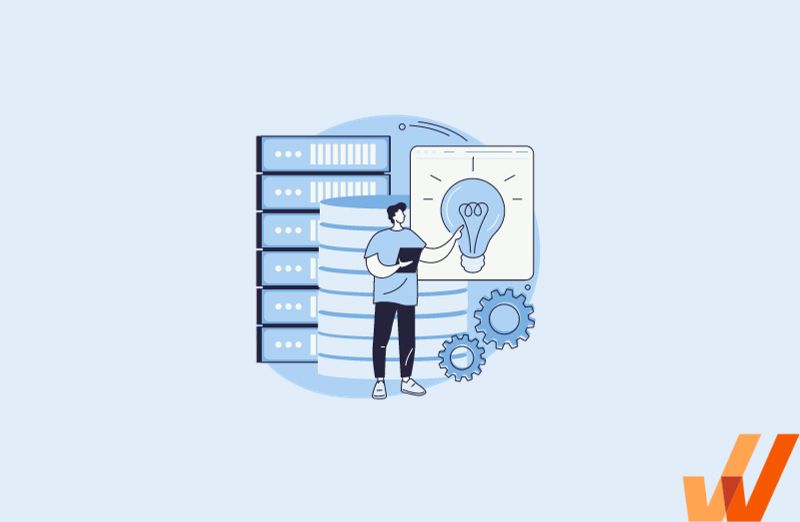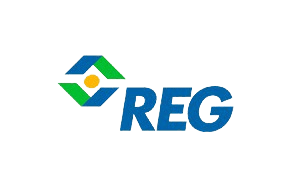
Levi Olmstead


According to Statista, global spending on enterprise software was $789B in 2022 and is expected to surpass $856B in 2023. Compared to 2019, that’s a 79% increase in enterprise software spending (2019 – $477B.)
Digital transformation is necessary for enterprises, as it enables employees with the technology to maximize productivity, drives operational efficiency, provides better and more personalized customer experiences, and transforms the core ways organizations operate.
However, integrating new software and modernizing legacy systems creates new challenges for IT teams – from end-user training and support to software license management across the entire stack of enterprise software tools across business functions. The management of these applications across an organization is called software asset management or SaaS management.
In this article, we’ll define software asset management, explore its essential functions and benefits, and walk CIOs and IT teams through the core steps of managing their entire enterprise tech stack through a software asset management strategy.
Software asset management (SAM) is a set of processes and practices to manage an organization’s software assets throughout their lifecycle, from procurement, deployment, optimization, adoption, and maintenance. SAM involves strategically optimizing software licenses, minimizing risks associated with software usage, and ensuring compliance with licensing agreements and legal requirements.
It also includes driving end-user adoption of software applications through contextual end-user training and support. The goal is to reduce costs, limit your organization’s exposure to risks, centralize decision-making related to software investments, and achieve maximum ROI from these applications.
What form does asset management take, especially for large enterprises with a complicated software footprint?
Let’s look at the four main areas of software asset management closer:
The average enterprise uses 67+ SaaS applications, according to BetterCloud’s 2023 State of SaaSOps report while Productiv’s suitably named State of SaaS Sprawl report puts the figure higher at roughly 254 SaaS applications per organization. And that figure is projected to grow 58% YoY for the foreseeable future: or, in other words, at this pace, your organization might end up with 1001+ SaaS platforms in just three years.
Below, you can see the growth of global software spend, up to an estimated $856B in 2023.

And there’s no guarantee each of those applications will generate a positive ROI for your company’s investment into them. Likewise, on-premise solutions might offer just as much utility for a lower price, but you’re unlikely to know if you don’t have a single source of truth for tracking your software footprint.
Software asset management helps you track every tool in your stack, categorize them, keep tabs on their usage, and adjust your spending, provisioning, and cloud/on-premise budget allocation accordingly.
According to Whatfix’s 2023 Digital Adoption Trends Report, 33% of employees received an hour or less of training for the core software they use to do their jobs effectively and 78% of employees said they lack the expertise on these tools to maximize their potential.
Outside of lower levels of efficiency and productivity, this presents risks to organizations in terms of compliance, poor data quality, unused software licenses, poor process governance, and more.
To overcome this, IT teams are tasked with managing digital adoption of their enterprise software. This includes understanding how business units and individual team members are adopting various applications, identifying areas of friction, understanding optimal processes and user journeys, etc. IT teams must enable their end-users with contextual training and real-time support to enable end-users to maximize their output and drive business outcomes powered by software.
IT teams are turning to digital adoption platforms (DAP) like Whatfix to enable its software end-users with in-app guidance and contextual self-help support – as well as collect end-user analytics and track custom events with behavioral analytics – to optimize enterprise workflows, reduce areas of user friction, and drive software adoption.
Software clicks better with Whatfix's digital adoption platform
Enable your employees with in-app guidance, self-help support, process changes alerts, pop-ups for department announcements, and field validations to improve data accuracy.
Software licenses distributed at enterprise scale usually have restrictions on:
Many enterprise software contracts specifically call out punishments for violations that range from account suspension (without prior warning), termination, data deletion, or punitive charges.
But, everyday employees (end-users) have enough work on their hands and aren’t going to spend time reading software agreements. This may lead to unwittingly violating the terms and conditions of a handful of software applications—and remember, depending on your company’s size, you have hundreds of these tools in your stack, being used by thousands of employees.
That’s where software access management comes in: it serves as a single control dashboard where IT administrators can monitor their software footprint and internal networks for signs of policy violations and educate end-users on the policy requirements for each product.
Zylo’s 2023 SaaS Management Index report notes that the average company wastes $17M annually on SaaS tools they don’t need or use. According to the report:
Let’s unpack that data. $17M wasted annually is a LOT. Secondly, once your organization has a decentralized software purchasing model where staff can whip out their corporate card to buy a tool, you’ll have lots of wasteful overlap, and it won’t be unusual for employees to straight up buy a software license for Canva or Figma when you have several unused Adobe Creative Cloud subscriptions.
Similarly, without a single source of truth where you can track your software footprint, it won’t be unusual for employees to buy a brand new license for a product they’ll use for just 30 minutes a year. Multiply that by thousands of employees, and that’s how you waste $17M annually.
Software access management accounts for every license your organization purchases, rotates them between employees and prevents duplicate purchases of the same or similar tools.
Software asset management is efficient—you don’t need an overarching philosophy to guide how you manage your stack, enforce usage policies, or assign licenses to employees. You simply need the right software asset management tools and SOPs to adjust to your company’s needs, and you’re on your way to a more optimized, better-managed software stack.
Here are eight steps to get started with SAM:
For the most part, the SAM team’s makeup will be determined by your company’s current size and the technical complexity of the applications you work with.
For instance, a small (say, 50+ employees) marketing agency that uses consumer SaaS applications like Asana, Airtable, Slack, notion, or Trello can assign their SAM duties to just any technically-savvy employee or hire a part-time IT administrator; conversely, a large enterprises that relies on Hadoop, Snowflake, AWS, Microsoft Azure, or Heroku will need dedicated IT roles, such as:
Are you trying to reduce spending, reduce SaaS waste, and centralize your software purchasing? Or, perhaps measure and determine whether on-premise and SaaS offers better ROI?
Your goal could be to build a single hub where you can control your entire stack, grant and revoke staff access as required, rotate licenses, monitor usage and idle licenses, and project renewals accordingly.
For the most part, this doesn’t require a committee; you can copy/paste a template and edit it to suit your use cases and real-life contingencies, especially if you’re a small-to-medium-sized firm with rapidly evolving needs.
It all depends on your company’s size, technical needs, and the bandwidth you’re comfortable spending on the process, but here are some policies you should consider adopting for your organization:
Once you have your policies nailed down, you want to audit your stack, get an up-to-date outlook on your organization’s tools, and identify opportunities for savings and optimizing your software footprint. By having an inventory of all IT assets, software asset managers can better control software spending, identify software redundancies or shadow IT, and more.
Record every active software license, including license details (name, version, activation keys, licensing model, etc.), purchase history, deployment data, usage statistics, cost/budget information, dependencies, active integrations, backup requirements, compliance and regulatory information, etc.
The best strategy for identifying opportunities for savings in your software stack is to question each product’s usage history since you acquired it:
Your end-users will always be the weak link in your software asset management strategy: they’ll often subscribe to new trendy SaaS tools on a whim and purchase different software licenses when they don’t understand how existing ones work—speaking of which, enterprise B2B tools have an annoying tendency to be significantly more complicated than their B2C peers, for little added value.
The way around that bottleneck is to train your staff—not with lengthy webinars and courses, but with contextual guidance inside your software tools’ UIs so they can learn how to navigate them faster. A digital adoption platform like Whatfix helps you enrich the UI canvas of your enterprise application with:

Above: Enable your employees with contextual user support and accelerate IT adoption with Whatfix's digital adoption platform.
The Whatfix Digital Adoption Platform empowers IT teams to create in-app guidance and self-service user support on all internal desktop, web, and mobile applications. Enable employees with Self Help, which overlays onto your CRM, HCM, ERP, CPQ, and other digital workplace applications. Self Help connects to your process and IT documentation, LMS, video tutorials, onboarding documents, and other IT support-related content to provide employees self-help, at the moment of need. Create additional in-app guidance and pop-ups to contextually guide users through applications and alert them to process changes.
A product analytics software like Whatfix Analytics enables IT teams to make data-driven decisions on their technology stack and application processes. With user behavioral analytics, IT team can:
Product analytics removes the guesswork from your software asset management strategy and makes it easier for end-users to maximize active licenses.
With Whatfix’s digital adoption platform and analytics suite, analyze, build, and deliver better end-user experiences to accelerate technology adoption and enable end-users to maximize software usage. Whatfix’s no-code system enables IT teams to analyze and measure digital adoption and product usage, create in-app guidance, and provide self-help user support.
Whether you’re trying to track usage across your organization’s software footprint, enrich each product’s UI with prompts and guidance aids, or validate data entries to reduce errors, Whatfix is the all-in-one in-app guidance, real-time support, and end-user behavioral analytics platform to empower your software asset management strategy and drive technology adoption.

While enterprise software tools can be complex and beginner-hostile, Whatfix helps IT leaders filter through their stack, minimize waste, and build engagement and adoption experiences for the products they eventually decide to keep – all built on data-driven decisions that are continuously improved.

Abby Essing, Sr. Manager, Operations Services at Renewable Energy Group, Inc.

Thank you for subscribing!